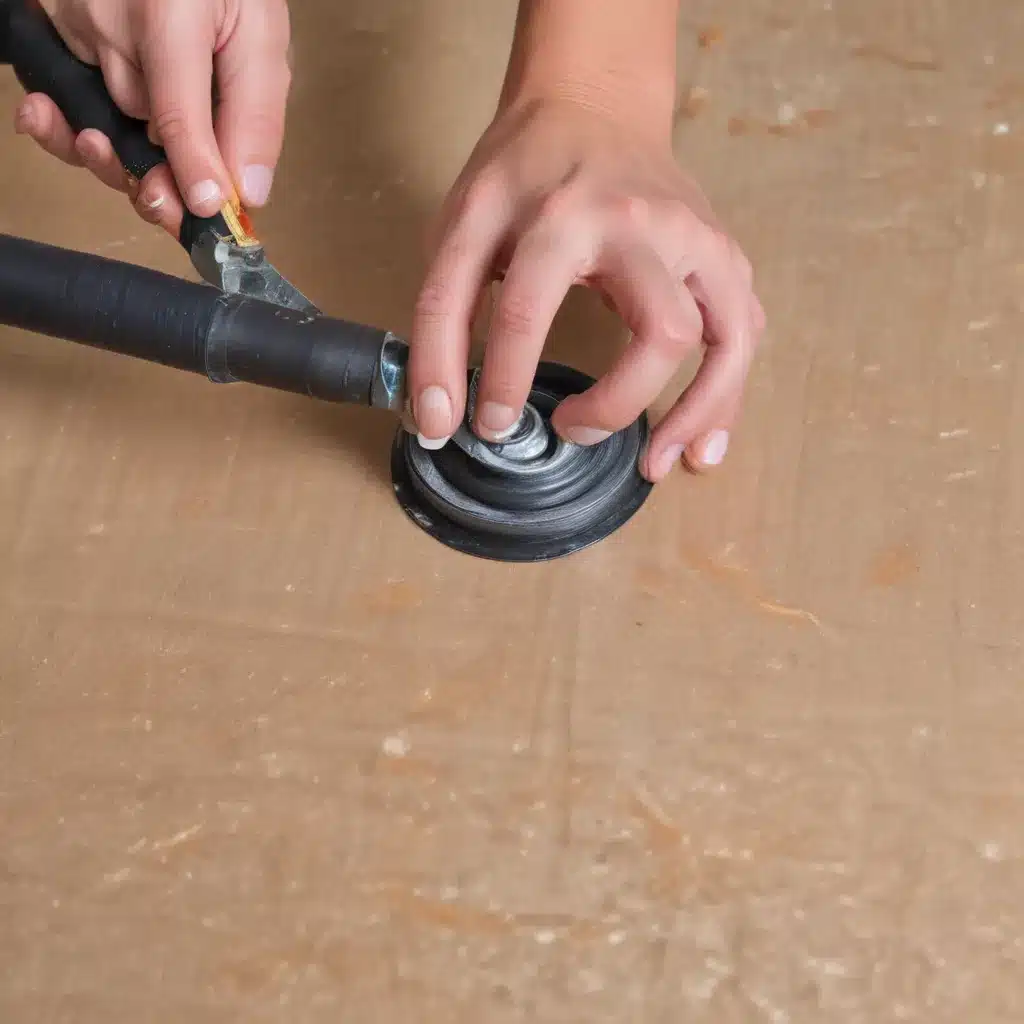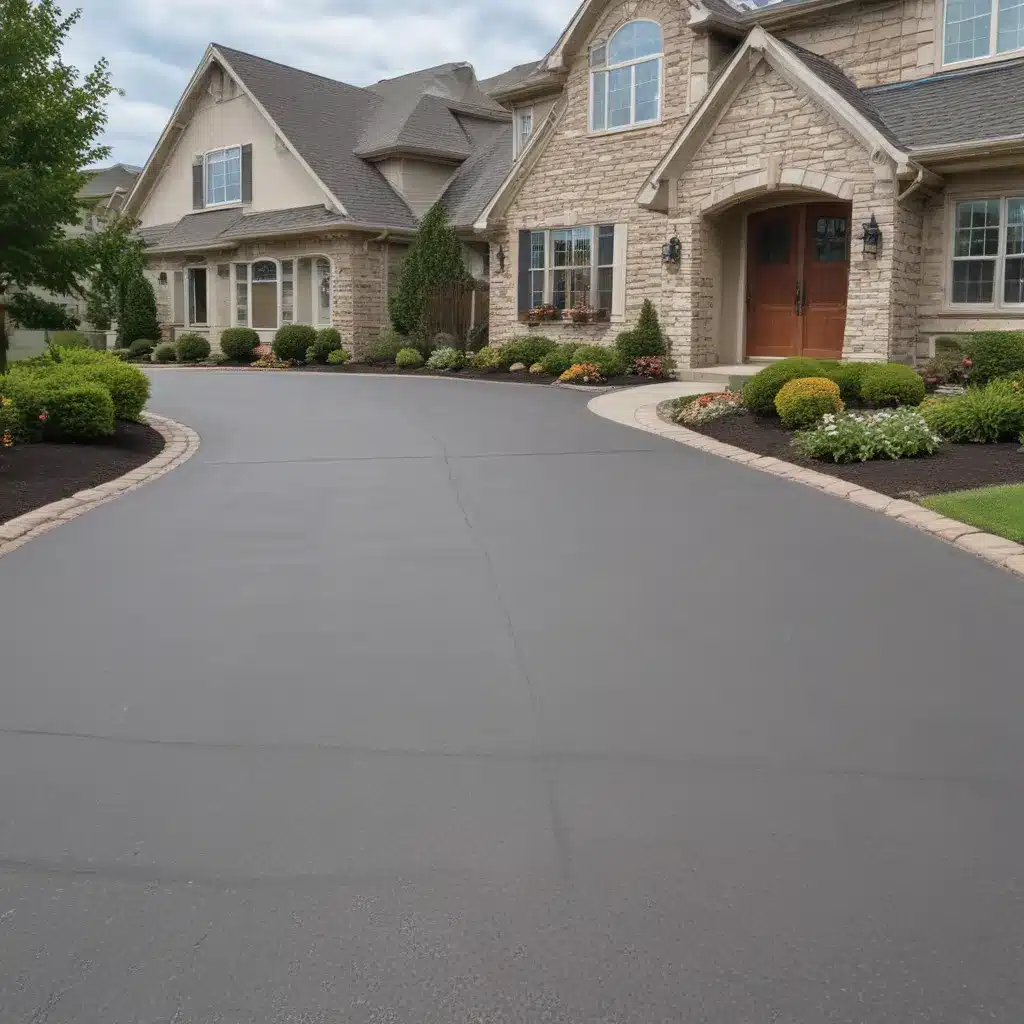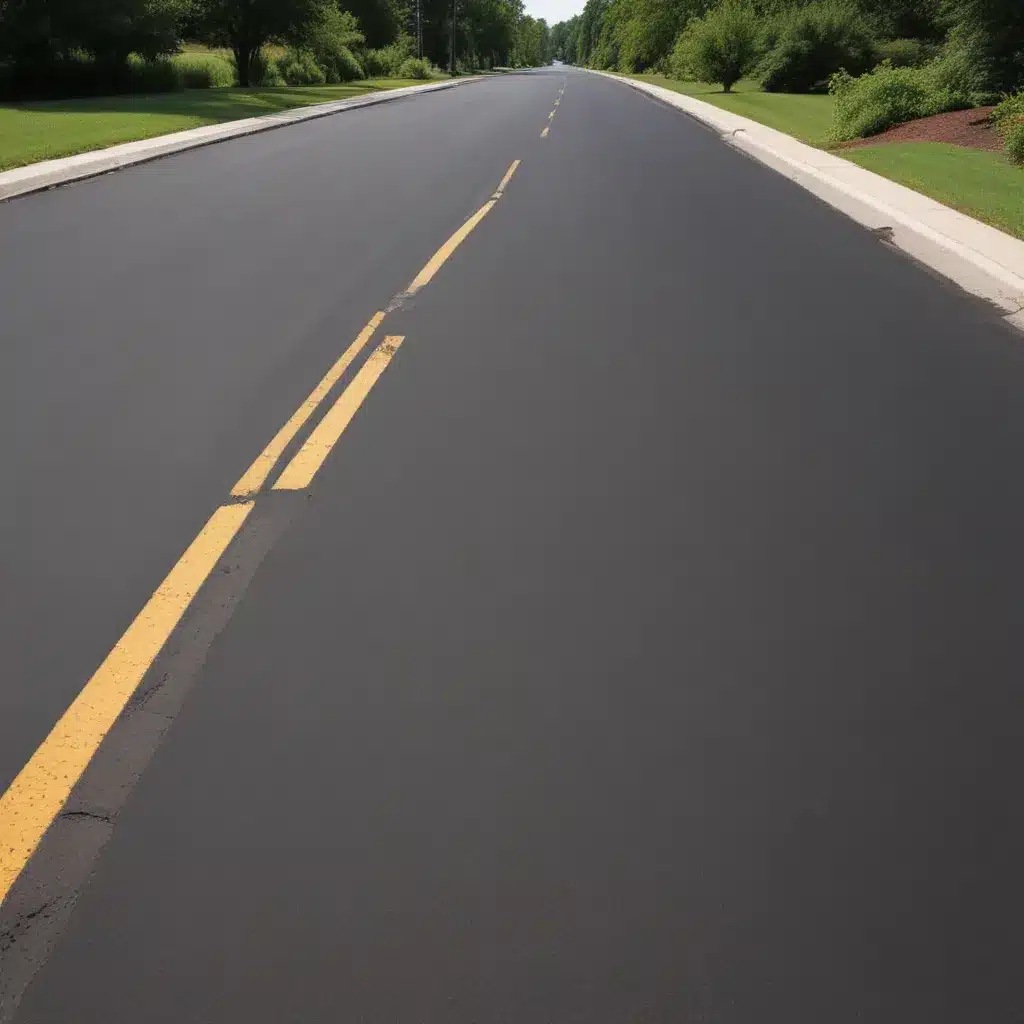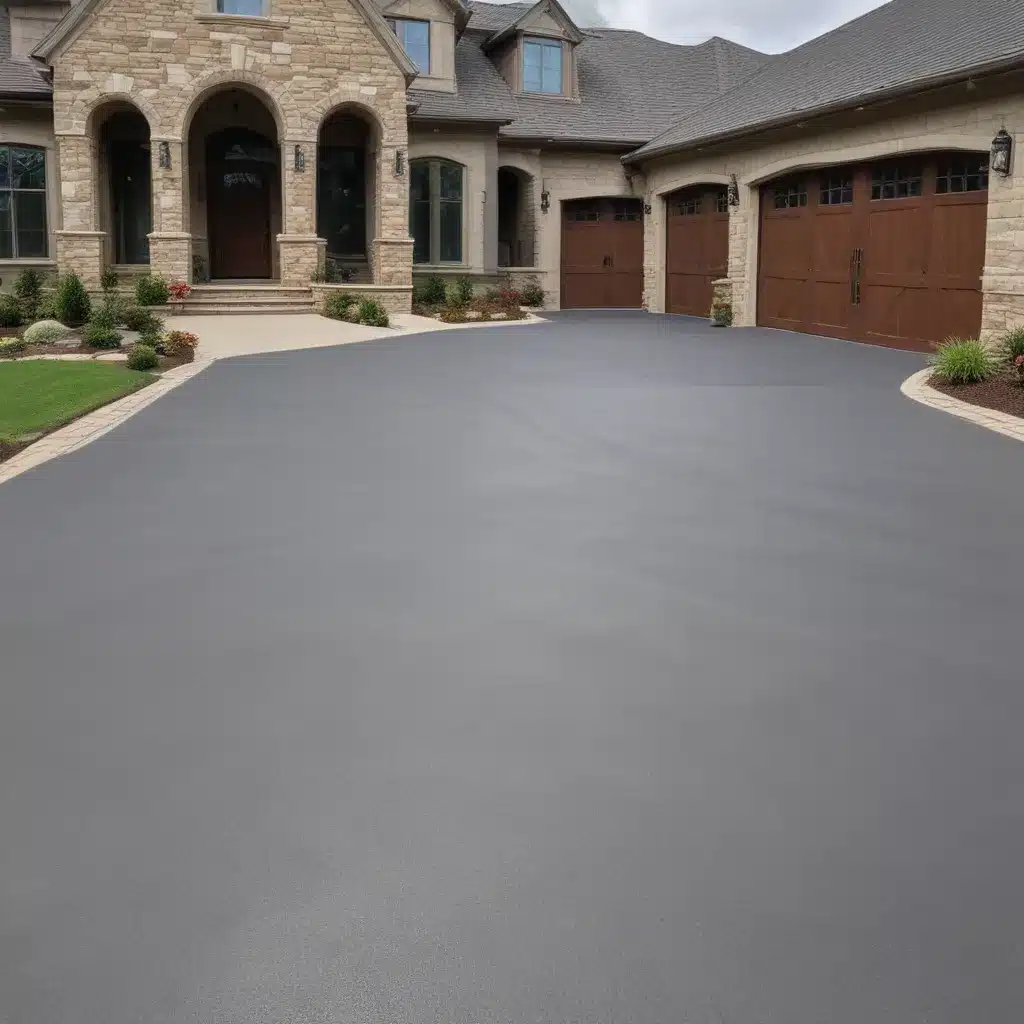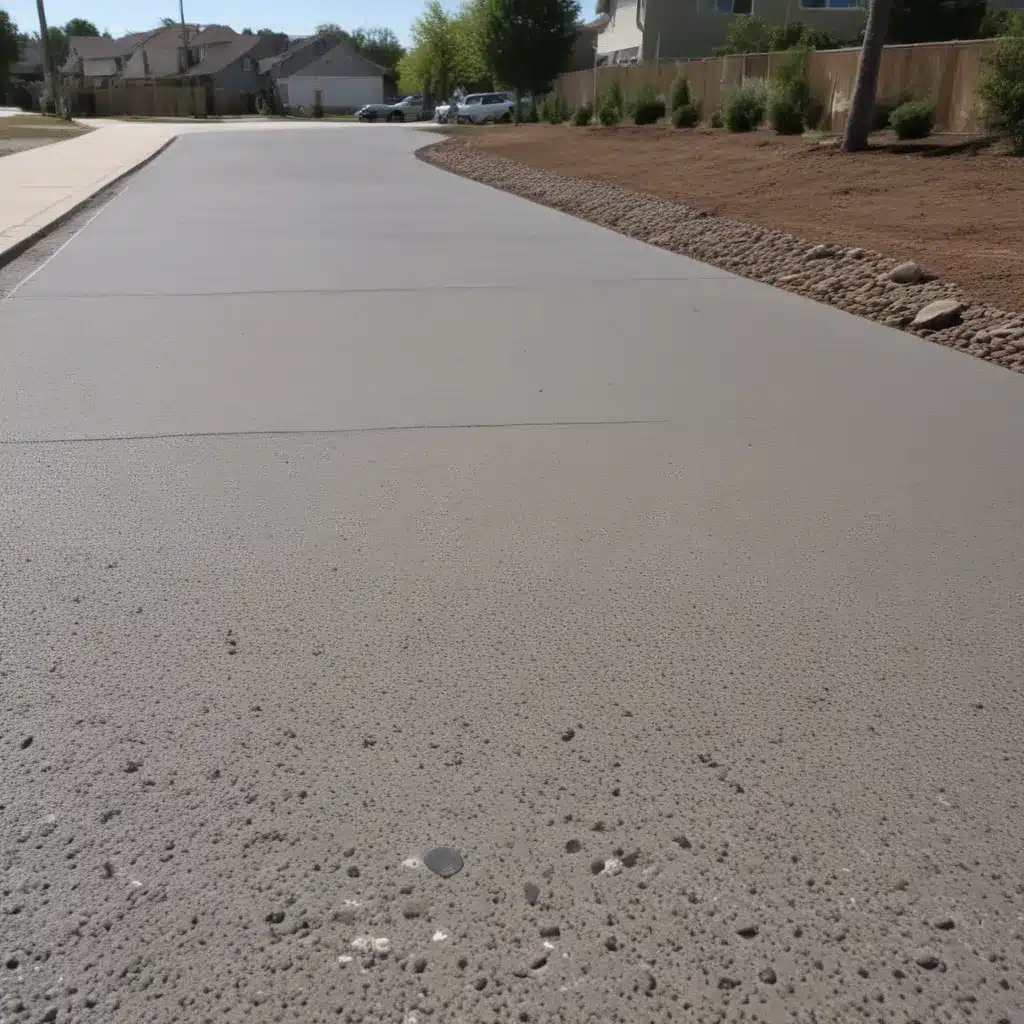The Driveway Dilemma: Why Sealing Matters
Ah, the trusty driveway – that unsung hero that quietly supports our daily comings and goings. But have you ever stopped to consider the importance of properly maintaining this essential piece of infrastructure? As someone who’s been there, done that when it comes to driveway woes, let me tell you, the secret to a long-lasting, damage-free driveway lies in regular sealing.
You see, your driveway is constantly under assault from the elements – the scorching sun, torrential rains, and the relentless freeze-thaw cycle. Over time, all this exposure can take a toll, leading to unsightly cracks, potholes, and crumbling surfaces that not only detract from your home’s curb appeal but also pose safety hazards. And let’s not forget the financial burden of constant repairs or, heaven forbid, a full driveway replacement.
That’s where DIY sealing techniques come in. By taking the time to properly seal your driveway, you can save yourself a pretty penny and ensure your investment stays in tip-top shape for years to come. But before you roll up your sleeves and get to work, there are a few things you need to know.
The Benefits of DIY Driveway Sealing
Saving Money
The first and most obvious benefit of taking the DIY approach to driveway sealing is the cost savings. Let’s face it, hiring a professional to seal your driveway can be a pretty hefty expense, with prices ranging anywhere from a few hundred to a few thousand dollars, depending on the size of your driveway and the complexity of the job. By doing it yourself, you can easily save 50% or more on the overall cost.
Now, I know what you’re thinking – “But I’m not a professional, how can I be sure I’ll do a good job?” Well, my friend, with a little elbow grease and the right know-how, you can absolutely achieve the same level of quality as a hired pro. All it takes is a bit of preparation, the right materials, and a willingness to get your hands dirty.
Preserving Your Driveway
Aside from the financial advantages, DIY driveway sealing also offers the added benefit of preserving the longevity of your driveway. By regularly applying a fresh coat of sealant, you’re creating a protective barrier that shields your driveway from the damaging effects of the elements.
Imagine your driveway as a loyal dog – without proper care and attention, it’s going to start looking a bit ragged around the edges. But with regular grooming (in this case, sealing), you can keep that pup looking and feeling its best for years to come. And just like with your furry friend, the investment you make in maintaining your driveway will pay off in the long run.
Enhancing Curb Appeal
Let’s not forget about the aesthetic benefits of a well-sealed driveway. When done right, sealing can revive the color and shine of your driveway, making it look as good as new. No more unsightly cracks, faded surfaces, or patches of disrepair – just a clean, uniform appearance that’ll have the neighbors green with envy.
And let’s be real, first impressions count. When someone pulls up to your home, the state of your driveway is going to be one of the first things they notice. A beautifully maintained driveway sends a message of pride and attention to detail, which can do wonders for your home’s overall curb appeal.
Preparing for the DIY Driveway Sealing Project
Alright, now that you’re convinced of the benefits, it’s time to roll up those sleeves and get to work. But before you start slapping on the sealant, there are a few essential preparation steps you’ll need to tackle.
Cleaning the Driveway
The first and most crucial step is to make sure your driveway is thoroughly clean. Any dirt, debris, or oil stains left behind can compromise the sealant’s ability to adhere properly, leading to premature peeling and cracking.
So, grab your trusty broom, a stiff-bristled scrub brush, and maybe even a pressure washer if you’ve got one. Give that driveway a good once-over, making sure to get into all the nooks and crannies. And don’t forget to pay special attention to any oil or grease spots – you may need to use a degreasing solution to get them squeaky clean.
Repairing Cracks and Holes
Next up, it’s time to address any existing cracks or holes in your driveway. These blemishes aren’t just unsightly – they can also allow water to seep in, leading to further damage down the line.
Thankfully, repairing minor cracks and potholes is a relatively straightforward process. You can pick up a driveway crack filler or patching compound from your local hardware store and apply it according to the instructions. Just make sure to let the repairs fully dry and cure before moving on to the sealing step.
Choosing the Right Sealant
Now, the fun part – selecting the perfect sealant for your driveway. There are a few different types to choose from, each with its own set of pros and cons.
Asphalt-based sealers are a popular choice, as they’re affordable and provide a nice, uniform finish. However, they tend to have a shorter lifespan and may not be as durable in colder climates.
Acrylic sealers, on the other hand, are known for their longevity and resistance to weathering. They can be a bit pricier, but the added protection they provide may be worth the investment.
Then there are silicone-based sealants, which offer exceptional water-repellency and can help prevent the growth of mold and mildew. These tend to be the most expensive option, but they also boast the longest lifespan.
Ultimately, the best sealant for your driveway will depend on factors like your local climate, the material of your driveway, and your budget. Do your research, read reviews, and don’t be afraid to consult with the experts at your local hardware store.
The DIY Driveway Sealing Process
Alright, now that your driveway is clean, repaired, and you’ve got the perfect sealant in hand, it’s time to get to work. This process may seem daunting, but I promise, with a little patience and attention to detail, you can achieve professional-level results.
Applying the Sealant
The first step is to make sure you’ve got all the necessary tools on hand – a high-quality paintbrush or roller, a squeegee, and a sturdy pair of shoes (you’re going to be doing a lot of walking).
Start by cutting in the edges of your driveway with the paintbrush, making sure to get the sealant into all the nooks and crannies. Then, use the roller or squeegee to apply the sealant in smooth, even strokes, working in small sections to ensure full coverage.
Remember to follow the manufacturer’s instructions to the letter – things like drying times and reapplication schedules can vary depending on the type of sealant you’re using. And be patient! Rushing through the process can lead to uneven coverage or bubbling, which will only lead to more headaches down the line.
Protecting Your Driveway
Once you’ve applied the sealant, it’s important to take measures to protect your freshly-coated driveway from any potential damage. This means keeping vehicles off the surface for the recommended curing time (typically 24-48 hours) and avoiding foot traffic for at least a few hours.
You may also want to consider applying a second coat of sealant, as this can help create an even more durable and long-lasting finish. Just be sure to follow the manufacturer’s guidelines for reapplication and drying times.
Maintaining Your Driveway
But the work doesn’t stop there! To keep your driveway looking its best and prevent future damage, you’ll need to make sealing a regular part of your home maintenance routine.
Most experts recommend resealing your driveway every 2-3 years, depending on the climate and usage. And don’t forget to stay on top of any minor repairs – those cracks and potholes have a way of spreading if left unchecked.
By committing to this simple maintenance schedule, you can rest assured that your driveway will continue to serve you faithfully for years to come. And who knows, you might even start to take a bit of pride in your handiwork, showing off your DIY driveway sealing skills to the neighbors.
Conclusion: The Rewards of DIY Driveway Sealing
So, there you have it – the ins and outs of DIY driveway sealing. Sure, it may take a bit of elbow grease and a weekend to get the job done, but the rewards are well worth it.
Not only will you save a significant amount of money by tackling this project yourself, but you’ll also have the satisfaction of knowing you’ve prolonged the life of your driveway and enhanced your home’s curb appeal. And let’s be honest, there’s just something deeply rewarding about taking on a hands-on home improvement task and nailing it.
Of course, if the idea of getting your hands dirty still doesn’t appeal to you, there’s always the option of hiring a professional. But before you go down that route, I urge you to give DIY driveway sealing a try. Who knows, you might just discover a new hidden talent and become the neighborhood’s go-to driveway maintenance expert.
So, what are you waiting for? Grab your tools, put on your most comfortable work shoes, and let’s get to sealing! Your driveway (and your wallet) will thank you.

